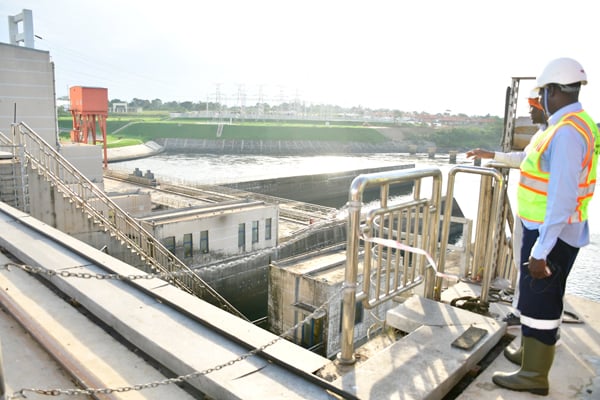Govt should address ills in electricity sector

What you need to know:
- In addition, it was noted that UETCL is undertaking various measures to ensure continuity of electricity supply including importation of 60MW power from Kenya, electricity dispatch of 50MW for Namanve thermal power plant, dispatching of 20MW from Kakira Sugar Power Plant, among others.
The premonition of defective works that marred the construction of the 183MW Isimba hydro-power dam came to pass on August 8, after the dam was shut down following flooding of the power house that houses generators and turbines.
Following the incident, the Ministry of Energy technocrats informed the public that the shutdown was undertaken to ensure safety of staff and protect electro-mechanical equipment.
The ministry noted that the Uganda Electricity Generation Company Limited (UEGCL) is undertaking appropriate measures to restore power production and the generation of dam power is expected to resume within two weeks.
In addition, it was noted that UETCL is undertaking various measures to ensure continuity of electricity supply including importation of 60MW power from Kenya, electricity dispatch of 50MW for Namanve thermal power plant, dispatching of 20MW from Kakira Sugar Power Plant, among others.
Secondly, our President has previously boasted about the surplus power that the country generates as being quoted in 2017. Indeed, available figures from Electricity Regulatory Authority (ERA) 2021 indicate that currently, Uganda produces 1346.6MW of power with exception of 600MW Karuma dam which is yet to be completed.
During peak hours, only 794.0MW is consumed (November 2021 statistics). This shows that over 500MW of power remains unconsumed/deemed. It is absurd that the shutdown of Isimba dam has occasioned loadshedding. Why hasn’t this power been deployed to avoid load shedding?
More so, the government is losing billions of shillings in deemed power as reported in the Auditor General’s report 2021. The country lost Shs80 billion, while it has provided tax exemptions to Bujagali Energy Limited, a company that owns and runs the 250MW Bujagali dam.
The government has borrowed heavily to refinance Bujagali dam. At the time when the dam was being constructed, government committed to ensuring that Ugandans get cheap electricity at $5 cents per kilowatt but at completion, the power from the dam cost more than $13 cents per kilowatt.
To make it worse, the tax exemptions have failed to reduce the electricity tariffs to $5 cents per kilowatt. Instead, available information indicates that as a result of tax exemptions, Ugandans have lost over Shs388 billion. Such losses cannot support a clean energy transition. The global average cost for hydropower is $0.047/kWh.
And over the years, Ugandans have severally complained about such energy investments that don’t bring returns to the country, including Isimba dam.
Ugandans have also complained about Umeme contracts, claiming that corruption led to signing of bad agreements that make power expensive.
A unit of electricity from Bujagali dam costs $13 cents at a time when the dam is exempted from taxes. The global average cost for hydropower is$0.047/kWh.
Ugandans now understand why the implementation of key energy policies and projects such as the ‘Free’ Electricity Connections Policy (2018-2027) under which three million new connections are planned by 2027 have not been realised to benefit the people.
The policy for which $212 million was borrowed, is part of Uganda’s Rural Electrification programme yet the policy failed to perform to its expectations of connecting 300,000 Ugandans per year.
This explains how the unreliable and expensive power access across the country has created pressure on the existing forests as over 40 million Ugandans search for firewood and charcoal for cooking and other energy needs.
In 2019, the National Forestry Authority (NFA) noted that Uganda had lost half of its forest cover in the past 30 years.
Statistics from the Uganda Bureau of Statistics (UBOS) indicate that 94 percent of the Ugandan population still relies on crude biomass to meet its cooking energy needs; 73 percent rely on firewood and 21 percent on charcoal.
Despite borrowing to invest in the energy sector, the sector debts constitute part of the over Shs73 trillion national debt burden and that’s partly a reason why Uganda remains one of the darkest and poorest countries in Africa.
In fact, our country cannot attain universal access to electricity by 2030, as aspired towards under Sustainable Development Goal (SDG) 7. Uganda’s own aspirations towards attaining an electrification rate of 80 percent by 2040, as is articulated in the ‘Free’ Electricity Connections Policy (2018-2027) will also not be achieved with these challenges.
Reflecting on the above, it is high time the government shifts focus to other alternative clean renewable energy sources, particularly off-grid solar power.
Patrick Edema
Environmental engineer




